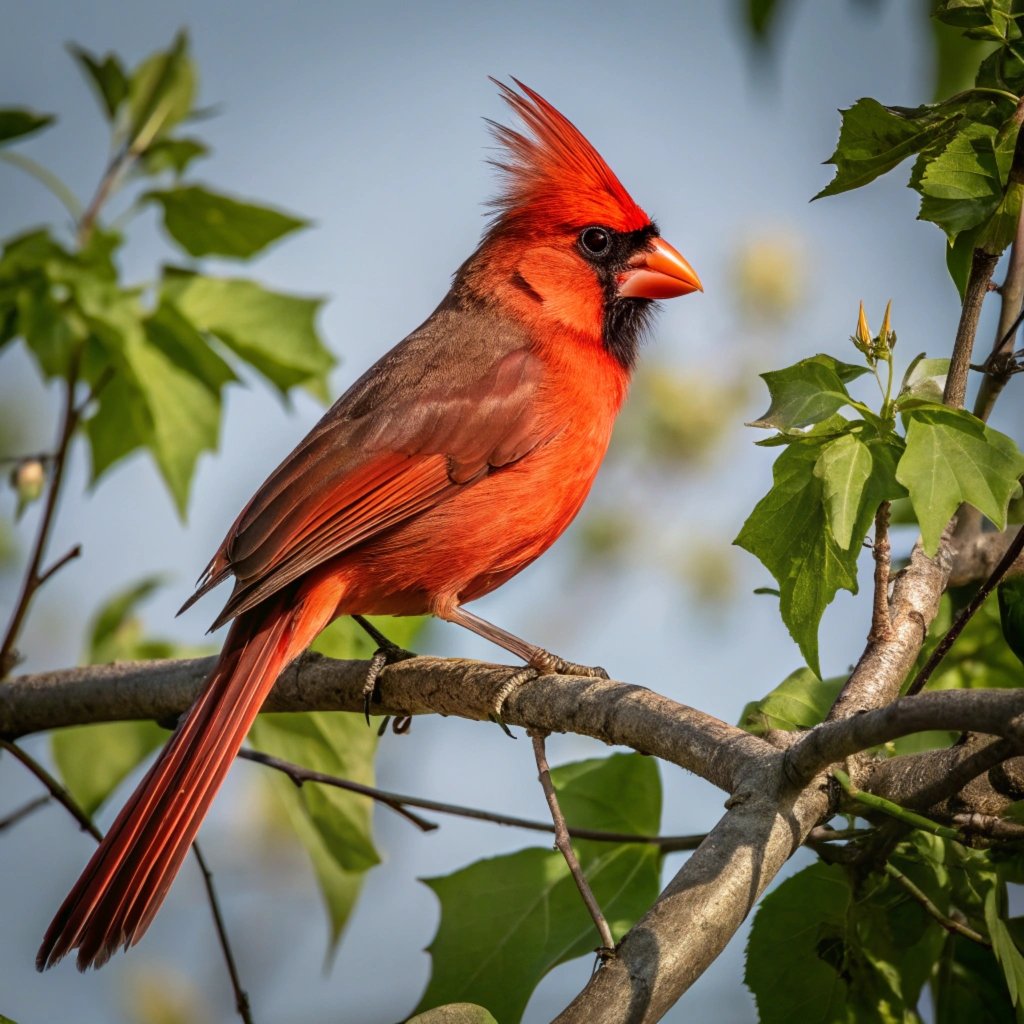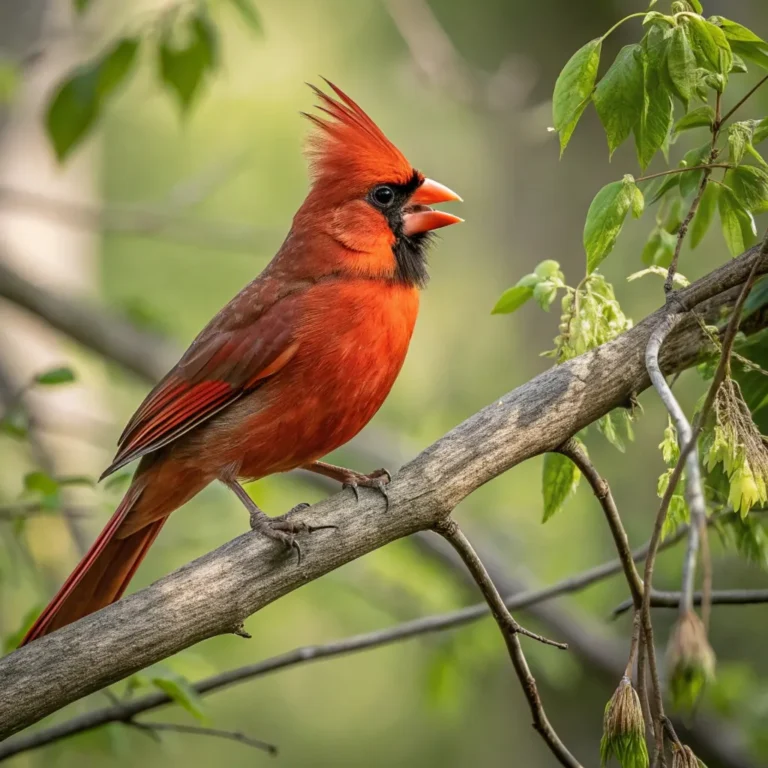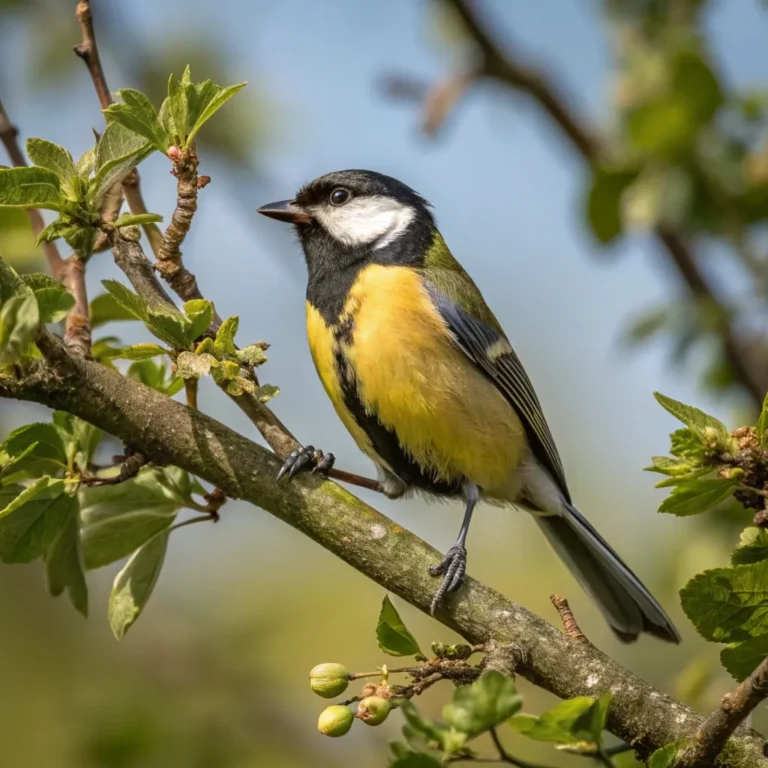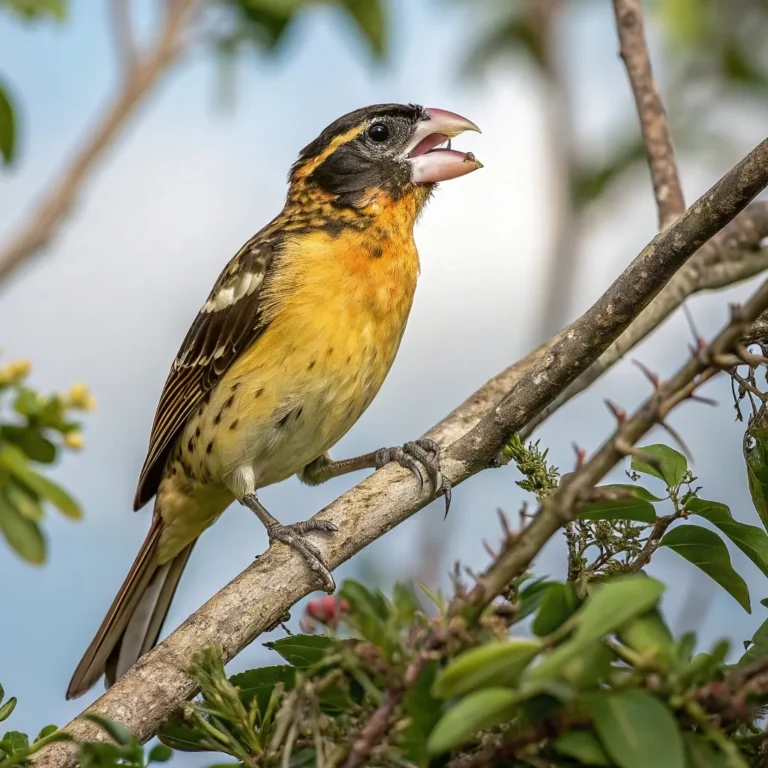12 Fascinating Facts About Cardinals You Didn’t Know!
Cardinals, with their striking red plumage and melodious songs, captivate bird enthusiasts and casual observers alike.
These fascinating creatures hold many secrets that might surprise you.
Let’s explore 12 intriguing facts about cardinals that will deepen your appreciation for these beautiful birds.
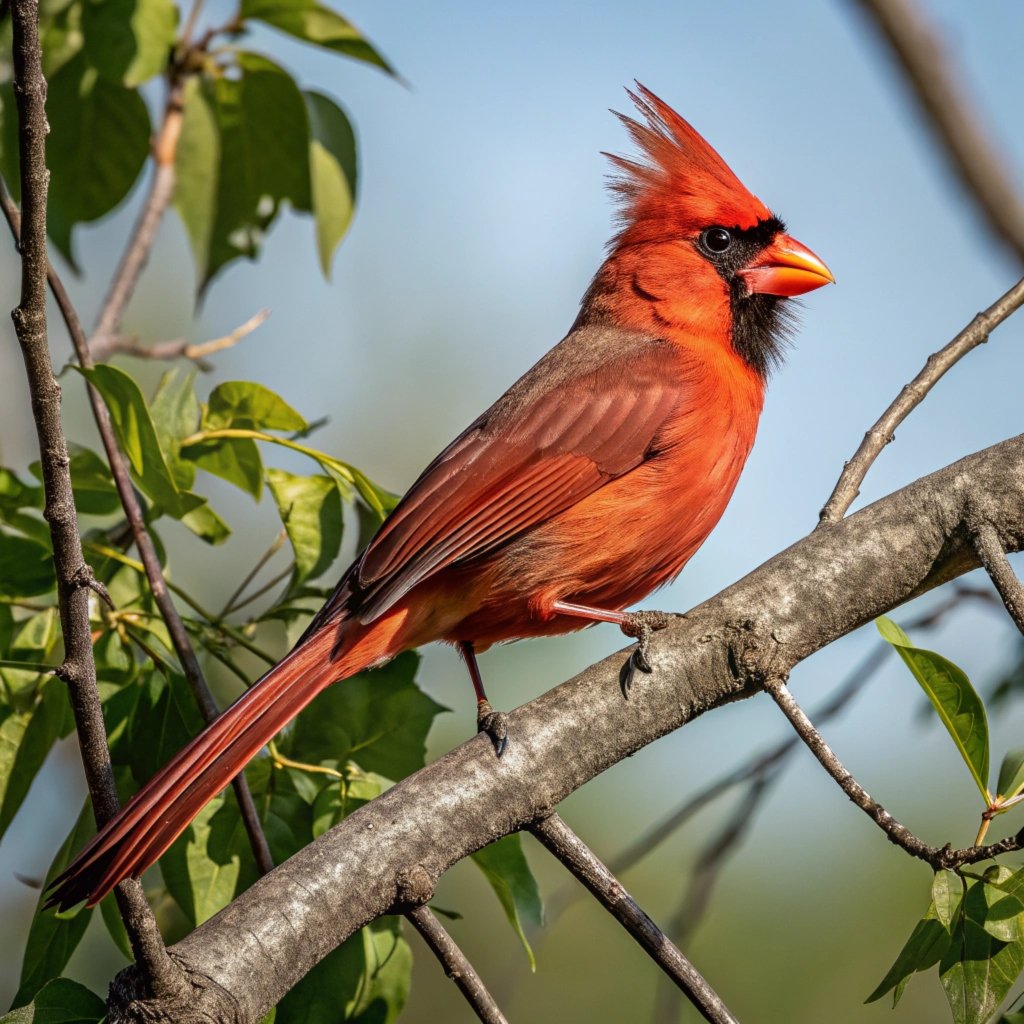
Key Takeaways: Cardinal Facts at a Glance
- Cardinals have black bills as juveniles, which change to orange-red as they mature
- Male cardinals can sing up to 200 songs per hour during breeding season
- Cardinals are ground foragers, spending 77% of their time feeding on the ground
- The red pigment in cardinal feathers comes from carotenoids in their diet
- Female cardinals also sing, which is uncommon among North American songbirds
- Cardinals are non-migratory birds, staying in the same area year-round
- The oldest recorded cardinal lived for 15 years and 9 months
- Cardinals are the state bird of seven U.S. states
- Male cardinals often fight their reflections, mistaking them for intruders
- Cardinals’ digestion efficiency varies with temperature, affecting their food intake
- The cardinal’s diet changes seasonally, with more vegetable matter in winter
- Cardinals typically have two broods per year, with three eggs in each clutch
The Colorful World of Cardinals
Cardinals are renowned for their vibrant red plumage, but did you know that this striking coloration has a fascinating origin?
The red hue in cardinal feathers comes from pigments called carotenoids. These pigments are obtained through their diet and deposited in the feathers during molting.
The quality and depth of the red color depend on the amount of carotenoids ingested by the bird.
The intensity of a male cardinal’s red feathers can indicate his health and fitness. Brighter, more vibrant males are often more successful in attracting mates.
This is because the brilliance of their plumage reflects their ability to find high-quality food rich in carotenoids, suggesting they would be good providers for offspring.
Interestingly, albino cardinals do exist, though they are extremely rare. These birds lack pigmentation entirely, appearing white with pink eyes.
From Black to Orange: The Changing Cardinal Bill
Young cardinals start life with a surprising feature – black bills. Unlike their adult counterparts, juvenile cardinals have dark bills that gradually change color as they mature.
Over a period of three to four months after hatching, the bill transforms to the familiar orange-red hue we associate with adult cardinals.
This color change is not just cosmetic but serves a practical purpose. The dark bill of juveniles helps them blend in with their surroundings, providing camouflage from predators.
As they grow and develop their distinctive red plumage, their bills also change to complement their adult coloration.
The bill color can also indicate a cardinal’s health and age. Brighter, more vibrant bill colors often signify a healthier bird.
Ground-Dwelling Songbirds
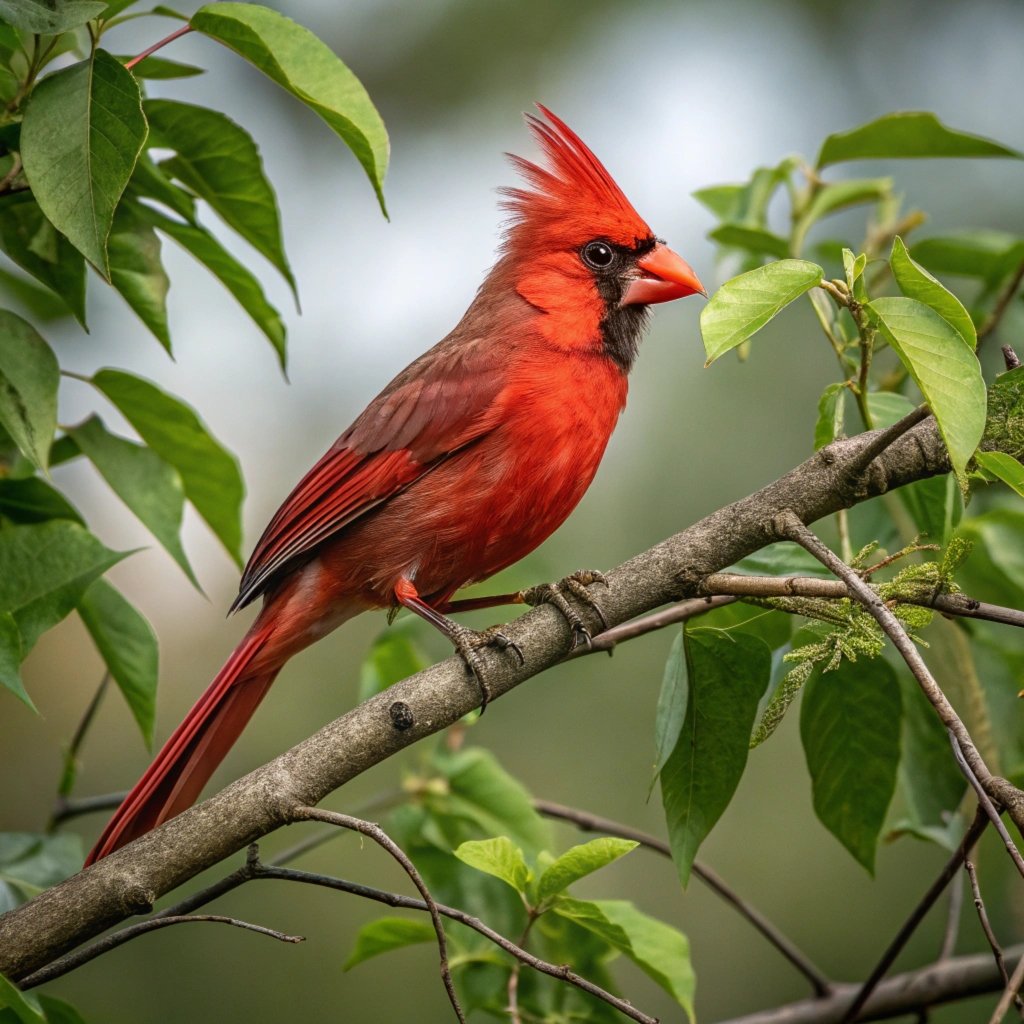
Contrary to popular belief, cardinals are not primarily perch-dwelling birds. A study in North Carolina revealed that cardinals spend a surprising 77% of their time foraging on the ground.
This preference for ground feeding makes them particularly vulnerable during periods of heavy snowfall, which can severely impact their ability to find food.
Cardinals have adapted well to human-altered environments, often foraging in gardens and backyards.
Their ground-feeding habit makes them frequent visitors to bird feeders placed close to the ground or on sturdy platforms. This adaptability has contributed to their success in urban and suburban areas.
Their strong legs and feet are well-suited for ground foraging, allowing them to efficiently search for seeds and insects among leaf litter and low vegetation.
The Melodious Cardinals
Cardinals are known for their beautiful songs, but the extent of their vocal abilities might surprise you. During the breeding season, male cardinals can produce an astonishing 200 or more songs per hour in the early morning.
Even more fascinating is that mated pairs often sing duets together, creating a harmonious symphony in nature.
The cardinal’s song is not just beautiful but also serves important functions. Males use their songs to establish and defend territories, as well as to attract mates.
The complexity and variety of a male’s song can indicate his fitness and desirability as a mate.
Cardinals are among the first birds to sing in the morning and the last to sing in the evening, often continuing their melodies well into twilight.
Female Cardinals: Songstresses in Their Own Right
Unlike many North American songbirds, female cardinals also sing. This unique trait serves a special purpose – females primarily sing to call their mates.
Interestingly, female cardinal songs can be longer and slightly more complex than those of their male counterparts.
The singing behavior of female cardinals is believed to play a role in pair bonding and territory defense.
When a mated pair sings together, it strengthens their bond and helps coordinate their activities, such as nest building and caring for young.
Female cardinals may also use their songs to communicate with their offspring, guiding and instructing them as they learn to forage and navigate their environment.
Cardinals and Climate Change
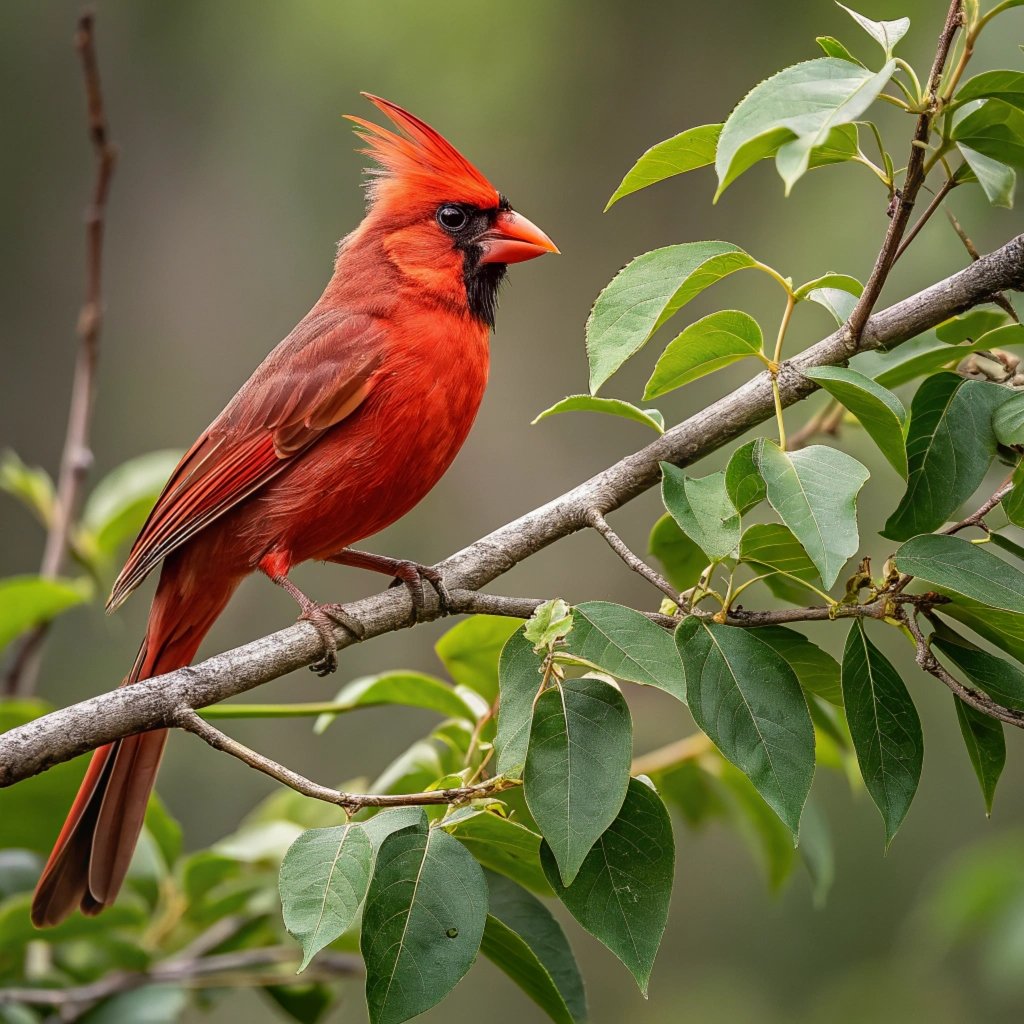
The northward expansion of cardinal populations over the past 60 years is linked to global temperature increases.
Studies show that the northern edge of the cardinal’s range is limited to areas with an average January temperature of at least 5 degrees Fahrenheit. As this temperature gradient moves northward, so do the cardinals.
This range expansion has allowed cardinals to colonize new areas, including parts of Canada where they were previously absent.
However, it also presents challenges, as cardinals must adapt to new habitats and potentially compete with other species for resources.
The cardinal’s response to climate change highlights the complex interactions between wildlife and shifting environmental conditions.
Seasonal Diet Shifts
Cardinals demonstrate remarkable adaptability in their eating habits. Their diet fluctuates throughout the year, with a significant shift between winter and summer months.
From November through April, over 75% of their diet consists of vegetable material. However, in July, this drops to a low of 35%, with insects making up the difference.
This dietary flexibility allows cardinals to thrive in various habitats and weather conditions. In winter, when insects are scarce, they rely heavily on seeds and berries.
During the breeding season, they increase their insect consumption to meet the protein needs of growing chicks.
Cardinals are known to eat over 100 different kinds of seeds and fruits, making them important seed dispersers in their ecosystems.
Temperature-Dependent Digestion
An intriguing aspect of cardinal physiology is how temperature affects their digestion. Studies have shown that cardinals’ digestion efficiency rates are 16% higher at 77 degrees Fahrenheit compared to 32 degrees.
This means that during cold weather, especially below freezing, cardinals must consume substantially more food to meet their energy needs.
This temperature-dependent digestion explains why cardinals are often seen feeding voraciously during cold snaps.
They need to consume more food to compensate for the reduced efficiency of their digestive system in colder temperatures.
Cardinals have developed strategies to cope with this challenge, such as caching food for later consumption and seeking out high-energy food sources during winter months.
Territorial Defenders
Cardinals are known for their territorial behavior, particularly during the breeding season. Male cardinals fiercely defend their territories, which can range from two to ten acres depending on habitat quality and population density.
This territorial instinct can lead to an amusing behavior – males often fight their own reflections in windows or shiny surfaces, mistaking them for intruders.
The size of a cardinal’s territory can indicate the quality of the habitat and the abundance of resources. Larger territories generally suggest a more successful and fit male.
Cardinals use a combination of song and physical displays to establish and maintain their territories.
Interestingly, cardinal pairs often remain on their territory year-round, defending it even outside the breeding season.
Year-Round Residents
Unlike many bird species, cardinals are non-migratory. They typically spend their entire lives within a few miles of where they were born.
This sedentary lifestyle means that cardinals must be adaptable to changing seasonal conditions in their home range.
Being year-round residents allows cardinals to maintain familiarity with their territory, giving them an advantage in finding food and avoiding predators.
However, it also means they must be resilient enough to survive harsh winters in northern parts of their range.
Cardinals have developed several adaptations to cope with winter conditions, including fluffing their feathers for insulation and seeking shelter in dense vegetation.
Breeding Habits
Cardinals have a relatively long breeding season, typically from March to September.
During this time, they usually raise two broods, with the first beginning in March and the second from late May to July. Each brood typically consists of three eggs.
The female cardinal is primarily responsible for nest building, which usually takes 3 to 9 days.
The nest is typically placed in dense shrubbery or a small tree, about 3 to 10 feet off the ground. Males contribute by bringing nesting materials to the female.
Cardinal eggs are incubated for about 11 to 13 days, and the young fledge after about 9 to 11 days in the nest. Both parents participate in feeding the nestlings.
Longevity Records
While the average lifespan of a cardinal is about three years, some individuals can live much longer. The oldest recorded cardinal was a female that lived for an impressive 15 years and 9 months.
This longevity record demonstrates the resilience of these beautiful birds when conditions are favorable.
Factors that contribute to a cardinal’s longevity include access to reliable food sources, protection from predators, and the ability to adapt to changing environmental conditions.
Cardinals in urban and suburban areas often benefit from supplemental feeding, which can help them survive harsh winters.
The relatively long lifespan of cardinals allows them to accumulate experience over the years, potentially improving their survival skills and breeding success.
FAQs About Cardinals
How many species of cardinals are there?
There are seven species of birds named cardinal in the world. The Northern Cardinal, common in North America, is just one of these species.
Why are cardinals red?
The red color of cardinals comes from pigments called carotenoids, which they obtain from their diet.
Do female cardinals sing?
Yes, female cardinals do sing, which is unusual among North American songbirds. Their songs can be longer and more complex than male songs.
How long do cardinals live?
Cardinals have an average lifespan of about three years, but some have been recorded living up to 15 years in the wild.
Are cardinals migratory birds?
No, cardinals are non-migratory. They typically stay within a few miles of where they were born throughout their lives.
What do cardinals eat?
Cardinals have a varied diet that includes seeds, fruits, and insects. Their diet changes seasonally, with more vegetable matter consumed in winter.
How many eggs do cardinals lay?
Cardinals typically lay three eggs per clutch and usually have two broods per year.
Why do cardinals attack their reflections?
Male cardinals often fight their reflections in windows or shiny surfaces, mistaking them for rival males intruding on their territory.
How many states have the cardinal as their state bird?
The Northern Cardinal is the state bird of seven U.S. states: Illinois, Indiana, Kentucky, North Carolina, Ohio, Virginia, and West Virginia.
Do cardinals mate for life?
While cardinals often form strong pair bonds, they don’t necessarily mate for life. They may choose new mates if one dies or if breeding is unsuccessful.

Joyce is the passionate founder of Chirping Hearts, a website dedicated to sharing her love for birds and providing valuable information about avian life. With a background in ornithology and years of experience in birdwatching, Joyce aims to inspire others to appreciate the beauty and diversity of birds. Through her engaging articles and guides, she hopes to foster a community of bird enthusiasts who share her enthusiasm for these incredible creatures. When she’s not writing, Joyce enjoys exploring nature trails and observing birds in their natural habitats.

